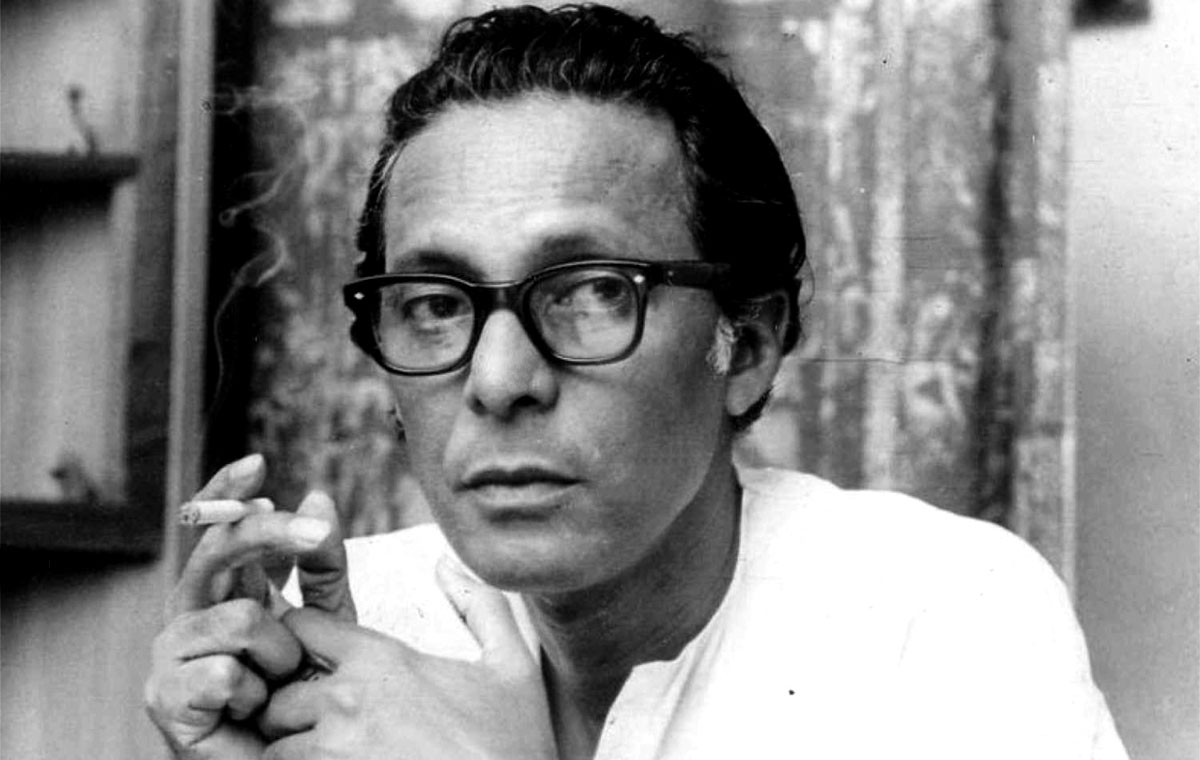Mrinal Sen : You Can’t Do Without The Press
(To commemorate his 95th birthday which was held on May 14, 2018 this year, with pride we at CINEBUSTER reproduce the interview with the veteran filmmaker MRINAL SEN by JYOTHI VENKATESH, which was first published 36 years ago in MID-DAY issue (dated 17, June, 1982)
If you do not have the passion for the tools that you use, you cannot become a good filmmaker. I like the camera, sound recorder etc”, Mrinal Sen said when I talked to him recently at Calcutta where his Bengali film Chaalchitra was screened as an entry in the Indian Panorama of the recently concluded Filmotsav 82.
“Before coming to films, I was a salesman of medicines, without knowing or liking anything about medicine. I quit the job soon and gatecrashed into films because I found the medium more fascinating. My business is to serve my own conscience. I am basically a communicator. That’s exactly what the nature of my job is. I do not know if I have any special aptitude for exporting my thoughts outside.What I aim at as a filmmaker, is to break the barriers that exist around us.
“I am not a Gandhian. I do not want to live in a fool’s paradise and indulge in wish fulfillment. Nowadays I find that the wealthy persons are coming to see me with proposals to make films for them. Who does not wish to go commercial? Even Godard wants his films to reach a wider audience. The trouble as well as the tragedy with the pseudo intellectual filmmakers is that they form a kind of defence mechanism around them and proclaim that they make films only for their personal satisfaction if their films do not do well at the box office.
Mrinalda continues. “Shashi Kapoor wants to make a film- a comedy with me. I believe he has a lot of money to make good films like Kalyug and 36 Chowringhee Lane. Even G.P. Sippy now wants to make a good small film with me after making blockbusters like Sholay and Shaan. Today, thanks to some of my films winning accolades and awards at some of the foreign film festivals which really matter; I find that I as a filmmaker am being watched not only by minority spectators as in the past when I was known only within and around Calcutta, but also by a sizeable section of the audience abroad.
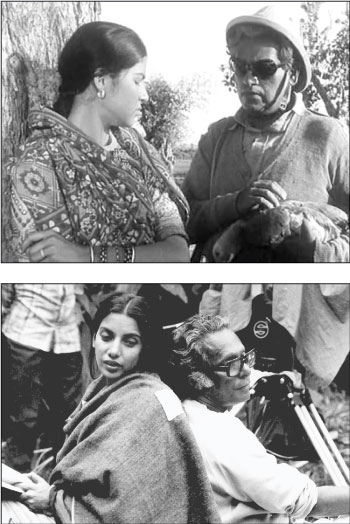 “To make your mark as a filmmaker on the international level is quite a herculean task. It is primarily important to build up a case for a particular kind of cinema, for a particular kind of filmmaker to sell his film abroad. Even three or four years ago, frankly speaking, it was difficult for me to sell my films abroad. Today it has been made possible thanks to an international agency based on Europe-Cactus Films.
“To make your mark as a filmmaker on the international level is quite a herculean task. It is primarily important to build up a case for a particular kind of cinema, for a particular kind of filmmaker to sell his film abroad. Even three or four years ago, frankly speaking, it was difficult for me to sell my films abroad. Today it has been made possible thanks to an international agency based on Europe-Cactus Films.
“Last year at the festival, Guney’s film was released in India.Yet nobody even knew who Guney is. This year at the Calcutta Filmotsav, people have become aware of him because of the films showcased in his retrospective section. It is imperative that the agency which sponsors you and your films to an international clientele believes in continuity and building up the maker’s case to make its point felt.
“Can a filmmaker do without press and publicity? As an honest filmmaker, I feel that you just cannot do without publicity. It is very important to project your image not only within the country but also abroad. Even a celebrated filmmaker like Akiro Kurosawa needs publicity. Last year in Cannes, my film Ek Din Pratidin was screened in the competition section and Kurosawa’s Kagemusha was there as Japans’ entry. You know what Kurosawa did? At a get together hosted by him, he presented to each and every one of the 200 odd guests-mostly from the various newspapers and magazines from all over the world- a transistorized clock. Did he really need to do that?
“Today a few filmmakers like Ray, Benegal, Ritwick Ghatak and myself have fortunately managed to create a clientele abroad for the kinds of films that we make here. However what inhibits the sale of Indian films abroad are the very stringent government rules. Moreover the films being selected and sent abroad for film festivals aren’t at all up to the mark. Will you believe it; I find it cheaper to make a print of mine in a foreign laboratory than in India. Moreover the quality is also far better if you make a print there.
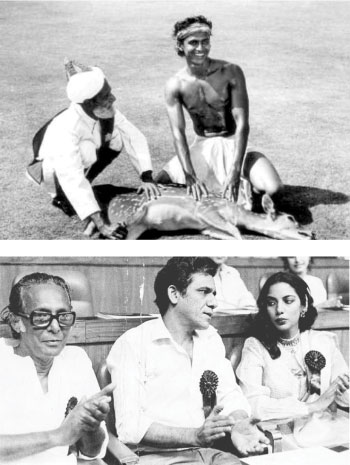 “To be austere is part of your aesthetic approach. I am not as austere as I was earlier. I admit it. Yet, within the existing format, I find that the maximum budget of a film of mine has only been six lakhs which is chicken feed compared to what some of the commercial extravaganzas cost the maker in terms of crores of rupees.
“To be austere is part of your aesthetic approach. I am not as austere as I was earlier. I admit it. Yet, within the existing format, I find that the maximum budget of a film of mine has only been six lakhs which is chicken feed compared to what some of the commercial extravaganzas cost the maker in terms of crores of rupees.
“I project the national milieu in my films. Critics accuse me of attacking the middle class morality in most of my films. I tell them that since I myself belong to the middle class even today, I also am actually attacking myself. I am only being true to myself. My next film will be based on a rural theme. By telling about the irresistible human compassion in Pather Panchali, Satyajit Ray had not sold our poverty abroad. The fact is that everybody abroad wants to know about Indian reality as it exists today without any clap trap. What is important for us to capture on the screen is the enormous ability and determination to exist here in spite for illiteracy and poverty.
“I have made only one film each in Telugu and Assamese and two in Hindi- Bhuvan Shome and Mrigaya, because it is difficult to make a film in a language which is not your own especially in a country like that of ours in which we have a queer habit of not making an attempt to understand the nuances of one’s neighbor’s language. “To make an impact as a filmmaker and convey your point objectively to the audience, you ought to have a detached involvement with the medium. I have achieved at times and also failed many times as far as my films are concerned. As and when I make a couple of enemies after my films are released, I feel that I have made my point successfully. It is the barometer of your success as a maker”.
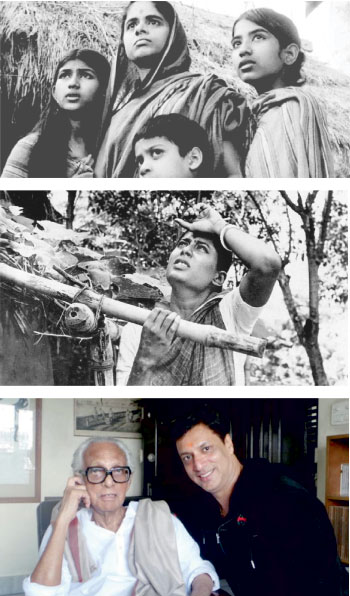 According to Mrinal Sen, the moment an artiste becomes a star, he loses track of his objectivity and commitment to the medium. “I made Mrigaya with Mithun when he was a nobody. I paid him only 4000 rupees. Today he draws around 4 lakhs per film and hence I do not want to cast him in my films. Do you know it was I who had paid Amitabh Bachchan his first remuneration in the film industry? Amitabh was working for K.A. Abbas’s film Saat Hindustani with which Amitabh Bachchan was actually introduced to the film industry. I asked Abbas to recommend a guy who could give a commentary in Hindi for my Bhuwan Shome. Amitabh Bachchan who overheard our conversation stepped in to introduce himself to me and asked me to consider him. He did the job and I happily paid him Rs 150”.
According to Mrinal Sen, the moment an artiste becomes a star, he loses track of his objectivity and commitment to the medium. “I made Mrigaya with Mithun when he was a nobody. I paid him only 4000 rupees. Today he draws around 4 lakhs per film and hence I do not want to cast him in my films. Do you know it was I who had paid Amitabh Bachchan his first remuneration in the film industry? Amitabh was working for K.A. Abbas’s film Saat Hindustani with which Amitabh Bachchan was actually introduced to the film industry. I asked Abbas to recommend a guy who could give a commentary in Hindi for my Bhuwan Shome. Amitabh Bachchan who overheard our conversation stepped in to introduce himself to me and asked me to consider him. He did the job and I happily paid him Rs 150”.
Mrinal Sen signs off. “Someone once asked me whether my films are autobiographical. Physically, they may not bear any semblance of my life. But the very experience of filmmaking is an exploration and an extension of my intellectual and my emotional self. “I wish I could start from scratch. I have done good, bad and indifferent films. I wish I could erase it all and start afresh like the professor in Ek Din Achanak who walked out on his family on a rainy day and never came back. One of the characters in the film says, ‘The saddest thing with life is that you live only one life.”
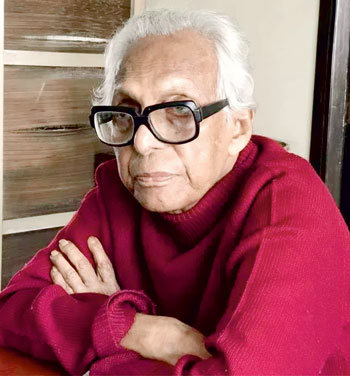 On his 95th birthday, we bring to you 10 amazing facts about Mrinal Sen
On his 95th birthday, we bring to you 10 amazing facts about Mrinal Sen
Mrinal Sen’s name has always been taken along with his contemporaries Satyajit Ray and Ritwik Ghatak. The trio would enjoy a healthy competition and were big fans of each other’s works. Sen’s method of experimental filmmaking and his depiction of Indian society have remained unparalleled.
Mrinal Sen, who was born in Faridpur, a town now in Bangladesh studied at the Scottish Church College where Netaji Subhas Chandra Bose had also completed his studies.Sen had joined the cultural wing of the Communist Party of India (CPI) but he never became a member. He understood how politics was taking the purpose of culture away from all cultural activities.
Mrinalda was a member of the Indian People’s Theatre Association, which was instrumental in unifying the youth of Bengal and involving them in theatre at a time when India was on the verge of Independence.Sen’s tryst with cinema began in the ‘Studio Para’ at Tollygunge in Kolkata. He was introduced to the world of filmmaking when he was reading Film as Art, a book by famous German film theorist Rudolg Arnheim, at the National Library. In order to start his filmmaking career, Sen took the job of an audio technician at a Kolkata-based film studio.
Sen’s first movie, Raat Bhor, was released in 1955. It was the debut film of Bengal’s film icon Uttam Kumar, but it failed in box office. Sen’s next film Neel Akasher Neechey (1959) earned him recognition.
His film Baishe Srabon (1960) was based on the tragic death of a child in a stampede during the cremation of Rabindranath Tagore. Baishe Srabon (the 22nd day of the Hindu month of Shravan) is Tagore’s date of death. This film earned Sen international acclaim.
Punascha (1961) earned Sen his first award. The film, featuring Dadasaheb Phalke award winner Soumitra Chatterjee, received the National Award for the Best Film in Bengali. Another of Sen’s masterpieces, Calcutta-71 (1972), depicts the social and political turmoil that Bengal had been going through from pre-Independence to the contemporary time. The 1980 film Akaler Sandhane had won the most National Awards for Sen. It got the National Film Award for Best Feature Film, Best Direction, Best Screenplay and Best Editing. It also won the Silver Bear – Special Jury Prize at the 31st Berlin International Film Festival.
Sen was the pioneer who brought experimental filmmaking to India. His unusual camera movement, his use of episodic narratives, news-reel type montages, discontinuities, and even slogans were something the Indian audience had never seen before. Because of his experimental filmmaking and youthfulness, he has been given the name ‘Maverick Maestro’.
Mrinal Sen had introduced many unknown faces to the screen. His 1976 film Mrigaya was the debut film of actor Mithun Chakraborty.


